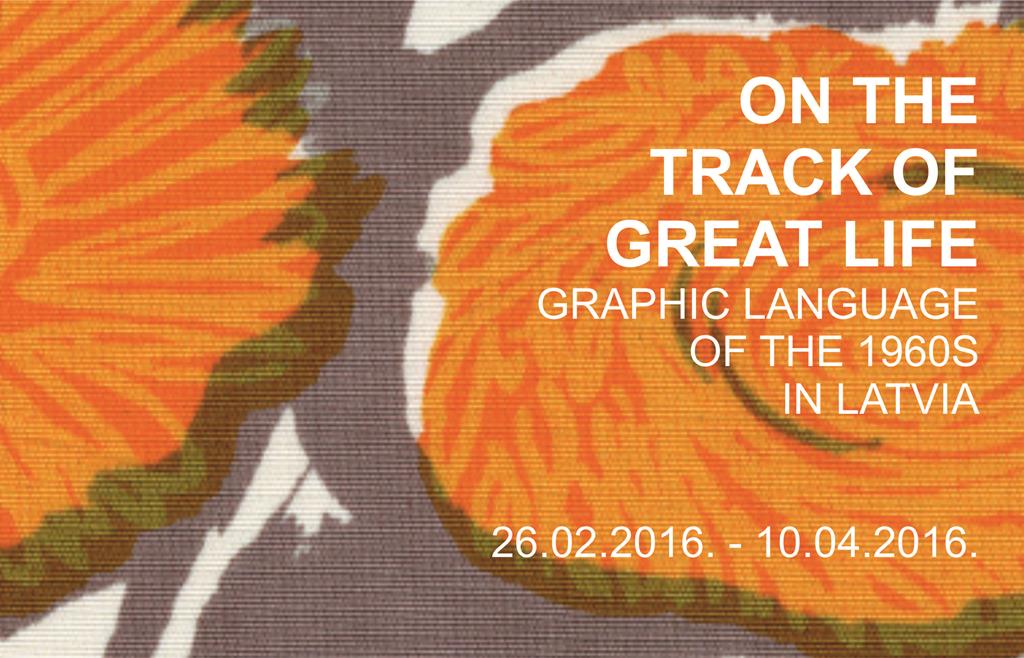Graphic Langauge of the 1969S in Latvia exhibition ON THE TRACK OF GREAT LIFE

On the Track of Great Life
Graphic Language of the 1960s in Latvia
the Track of Great Life. Expression of the graphic art of the 1960-ties” displays objects characteristic to that particular time in the history, resembling the once new aesthetic ideals – dominance of the so called linear-geometric style. Ideals changed along with the boom of the economy and the light industry, as well as the exploration of the Universe and the progress of science and technology.
The 1960s were an era when aesthetic ideals changed in comparison to the excessive decorativeness and pompousness of so-called Stalinist Baroque in the previous decade. This was a very radical process. The aim of the exhibition is to examine the results of a period that has not been researched to any great degree in the past, showing that even behind the Iron Curtain, artists, architects and designers in Latvia were in lockstep with timely trends of Modernism in the world. The exhibition is focused on the most important stylistic element of the age – the expressive but laconic graphic language, purposeful stylisation and the use of bright local colours in room design, objects d’art (ceramics and textiles), applied graphics, poster art and book design.
The title of the exhibition, “On the Track of Great Life,” comes from the popular Ojārs Vācietis poem “A Girl from my Class.” The positive tone of the poem characterises a change in the political climate in the USSR – the so-called Khrushchev Thaw. During that period, artists were, to a certain extent, provided with a freer latitude of creative expression in all areas of art. The role of creative people became more important in the 1960s as designers and artists increasingly worked with manufacturers and scientists (increased light industry, space travel, as well as scientific and technical progress). In Latvia, too, partnerships with engineers, constructors and technologists involved the use of modern materials to create high-quality and artistic consumer goods that could be manufactured at the mass level while still satisfying global standards and timely fashion trends. Similarly high demands applied to applied graphic art. Of importance was the need to establish a unified graphic design for shop trademarks and packaging. Posters devoted to cultural events became more common.
The exhibited items have been selected from the Museum of Decorative Arts and Design, the Latvian Museum of Architecture of the State Cultural Monument Protection Inspectorate, the Museum of the Latvian Artists’ Union, the Information Centre, the Ceramics and Textile Art Departments of the Art Academy of Latvia, the Latvian National Library, the Riga Porcelain Museum of the Association of Culture Institutions of Riga City Council, the Latvian National Archive, the artists themselves, and private collections, as well as the Daugavpls Mark Rothko Art Centre.
Curatorial board: Irēna Bužinska, Sandra Krastiņa, Ilze Martinsone, Valdis Villerušs, Iliana Veinberga
The exhibition is supported by the State Culture Capital Foundation and the Education,Culture and Sports Department of Riga City Council.







